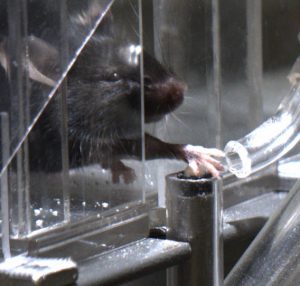Background and Significance:
Rett Syndrome (RTT) is diagnosed as a neurodevelopmental disorder, which is characterized by stereotypic motor, communication, sensory and cognitive impairments. Girls with RTT exhibit typical motor function till ~6 months of age, after which they exhibit developmental delay and/or regression in motor function. The neural circuitry underlying this atypical motor function is unknown. Though many studies have shown that gross motor deficits are common in symptomatic male or female mice, the pathogenesis of the motor phenotypes in pre-symptomatic female mouse models is under-explored.
Girls and women with RTT undergo occupational and physical therapy regimens, which can be wide-ranging, dependent on the individual patients and their families, clinical care settings and access to care. The effectiveness of such regimens and the underlying neurological basis for their effectiveness is currently unexplored. We hope to set the stage for identifying and following skilled fine motor control sequences and their underlying neurobiological basis in female mouse models of RTT. The implications of the results would ultimately inform neurobiology-based mechanistic approaches to occupational therapy in individual patients with RTT.
We use a pellet reaching and grasping assay as a model to study fine motor control in

Mouse reaching and grasping for a pellet
adult female mice. Skilled reaching and grasping task involves multi-sensory integration of cues, arm/hand position, coordination and repetitive learning by practice to execute successfully.
The pilot project was done in collaboration with Dr. Xu An, a postdoctoral scientist in Dr. Josh Huang’s lab in Cold Spring Harbor Laboratory.
We have now built a modified setup in University of Tennessee with the help of the amazing staff at Biology Services Facility.
We record mice with high-speed cameras during the behavior and analyze grasping mechanics, success rates in grasping the pellet, general gait/stance/posture of the animal during the initial introduction to the task and during training and expert stages.
Major questions:
- What are the specific fine motor deficits in female RTT mouse model? When does it start?
- What brain regions are essential for efficient control of reaching/grasping behavior?
- How does MECP2 play a role in this process?
- Are PNNs and atypical experience-dependent plasticity observed in this behavior as well?
- Can approaches similar to occupational therapy in Rett patients, be simulated or modeled in mice in order to determine the underlying neurobiological process?
Collaborator: